50th Anniversary Round the World Trip
We may have left Doha in the dark, dark, middle of the night, but we were approaching Kathmandu in bright morning light. Could that be the Himalayas in the clouds?
Mt. Everest is only about 100 miles from the Kathmandu Valley and we hope to be able see it on a tour later on— Praying for no clouds!
Anne forte
21 chapters
20 Aug 2023
Chapter 11 - Kathmandu, Nepal
We may have left Doha in the dark, dark, middle of the night, but we were approaching Kathmandu in bright morning light. Could that be the Himalayas in the clouds?
Mt. Everest is only about 100 miles from the Kathmandu Valley and we hope to be able see it on a tour later on— Praying for no clouds!

From the plane the city of Kathmandu looks to be very sprawling.
The Kathmandu valley lies at an altitude of 4,600 ft.
We are staying at a great local hotel just on the edge of the Thamel district. But we are very tired. Especially after the crazy taxi ride, we just experienced! The picture here does not do it justice!
Sightseeing will have to wait for the completion of a little R&R.

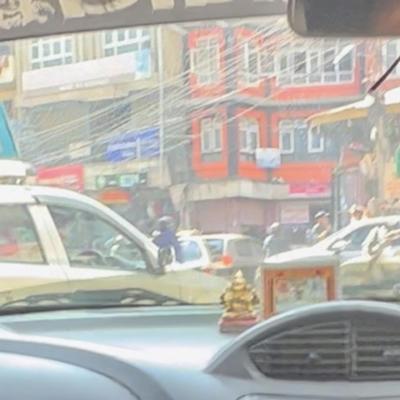
Kathmandu was founded in 723 AD by Raja Gunakamadeva. Its name refers to a wooden temple (kath, “wood”; mandir, “temple” or “edifice”) said to have been built from the wood of a single tree in 1596.
Each year there are festivals that celebrate this by the felling, consecrating and erecting of a pole made from the trunk of a single tree. Believe it or not, today is the first day of one of the largest— a nine day festival.
We were warned not to go to Durbar Square because of the crowds, but we’re not going to miss this!


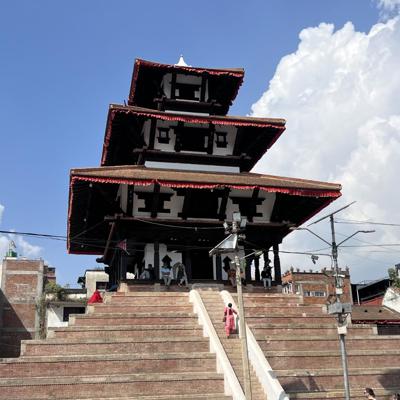

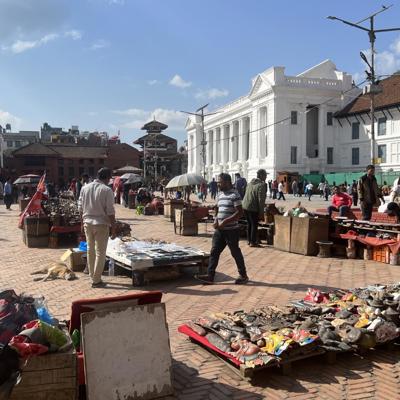
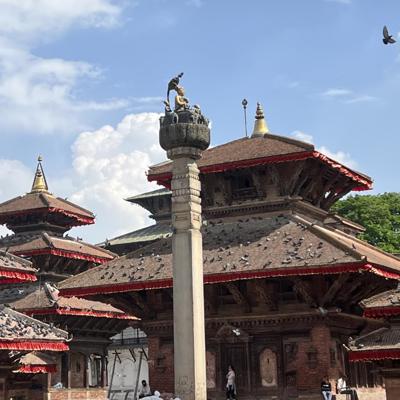
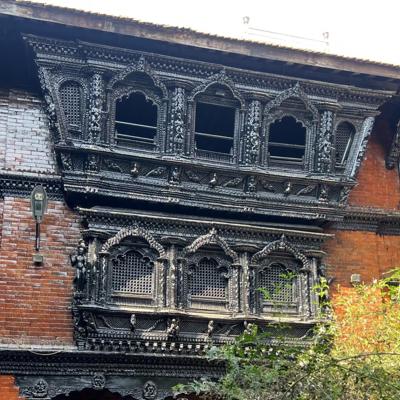

Durbar square has buildings dating back to the 3rd centuries, temples built in the 16th centuries, and later buildings from the 18th century We hired a local guide, Krishna, who was Newari and proudly told us the history of the temples with Newari facades adorned with meticulously carved wood.
The central part of the square is home to palaces which were used by Nepali monarchs until the 18th century. Many of them still show cracks from the earthquake of 2015 which measured 7.8 on the Richter scale.
As soon as we hired our guide he took us to a three-story temple called Kumari Chawk which is the home of the Kumari, a young girl worshipped as a living embodiment of the Hindu Goddess Durgo. Krishna explained how a young girl with physical perfection, certain emotional traits and was born under a full moon was selected to be a living goddess until she reaches puberty after which she became mortal and the search for the next living goddess began. No more than 10 minutes passed before an adorable 9-year-old appeared in a second floor window and silently looked out over the silent crowd below. It was an amazing moment. She was gone after about 30 seconds!
We were not allowed to take a picture of the goddess, but we were able to take a photo of a poster and the window she appeared in (last two pictures).
Our guide also showed us Freaky Street where apparently hippies like Jimi Hendrix and the Beatles lived while looking for “enlightenment”.
Mo:mo
Each time we travel, we come across something so fabulous that we want to duplicate it when we get home.
So far we’ve collected recipes for pumpkin salad, bean soup and pita bread. But nothing knocked our socks off till we tried momo. It’s spelled mo:mo on menus for some reason.
A momo is a dumpling.
It’s similar to pierogi but with much thinner dough.
It’s kind of like ravioli.
It can be served in soup like wontons.
It can be super spicy like gyoza.
We asked the waiter who didn’t speak much English if she knew how to cook momo. She said “google”. So we will!!!
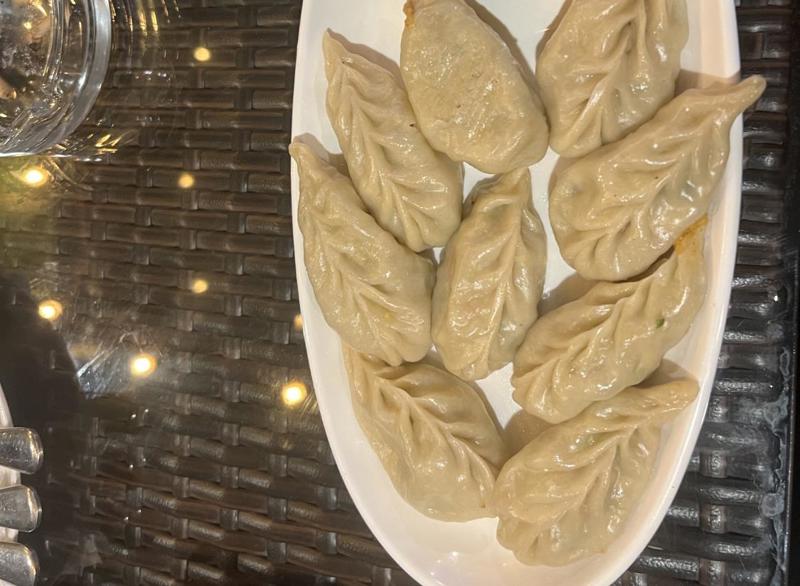

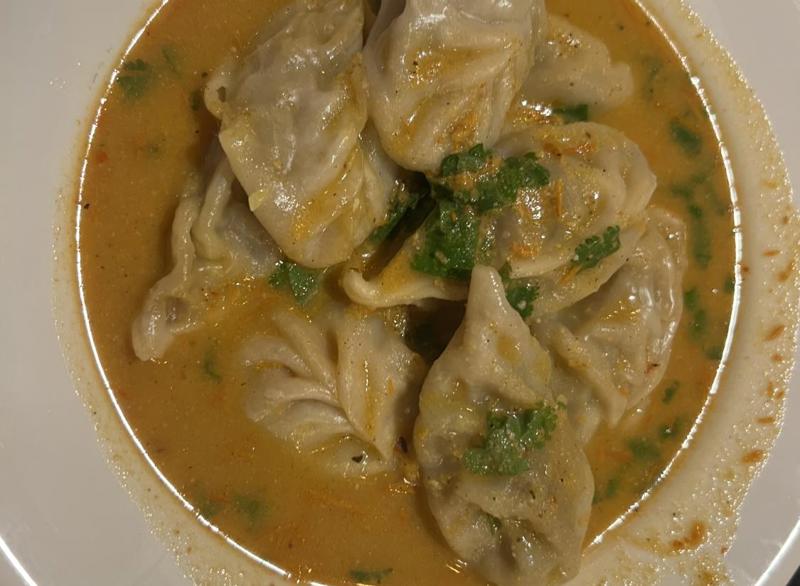
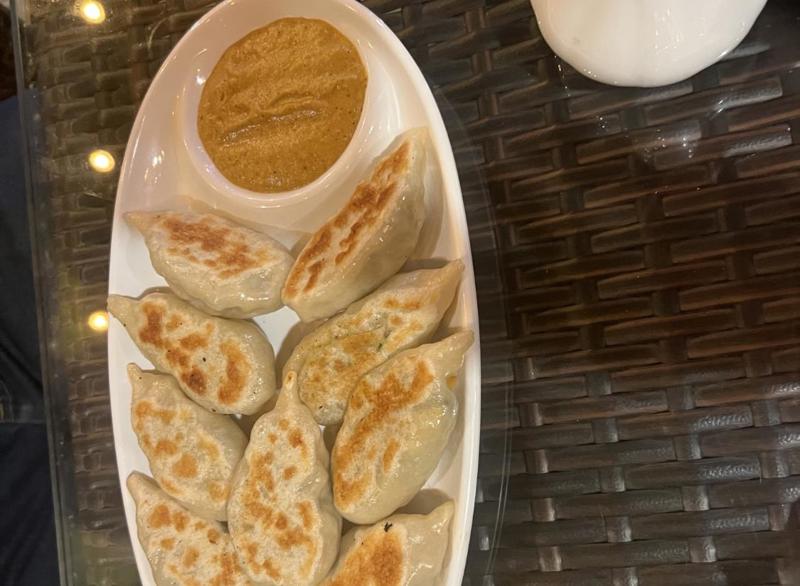
Monkey Temples and Stupas
We have been looking at the Swayambhu religious complex every morning at breakfast and every evening at dinner. It looks so enticing up a hill across from our hotel so we decided to investigate.
It is one of the oldest religious sites in Nepal. One part of the complex is known as the Monkey Temple and there are cute but aggressive monkeys everywhere.
In another area is the Swayambhu Stupa. Stupas are religious monuments that are used by Buddhist monks as places of meditation. The large domes contain relics and “Buddha eyes,” symbolize wisdom and the all-seeing nature of the Buddha. Colorful prayer flags hang from the tall spire. Surrounding the entire mound are prayer wheels. We saw many Buddhist and Hindu people walking in a clockwise

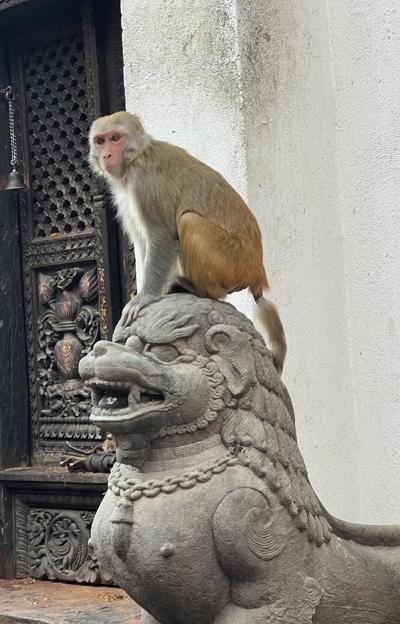
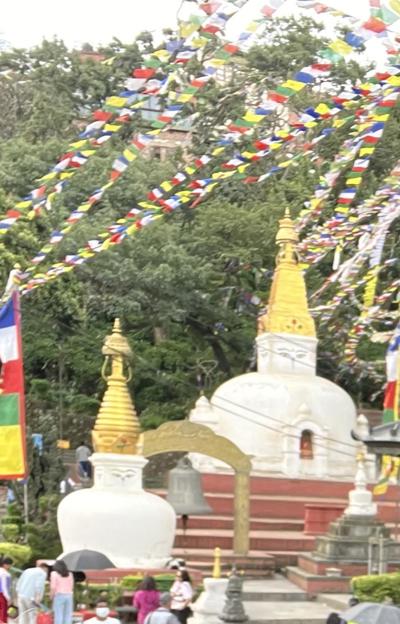
direction spinning prayer wheels as they walked.
Kathmandu Day 3
On day three we went up to the Chandragiri Hills to see if we could view Mount Everest. From the hills, you can see 180° of Himalaya mountains, but clouds hide some of them regularly. It seems to be a pattern here that it’s clear in the morning and cloudy starting around noon, so we hoped that our trek at 9:30 AM would work out. The forecast was sun sun ?? ! And it was just gorgeous!
As soon as we got to the cable car parking lot we could see peaks of the Himalayas hugged by clouds. Mt. Manaslu, the eighth-highest mountain in the world at 26,781 ft above sea level was clear, identifiable, and so exciting to see!
Here it is by the naked eye and then zoomed.
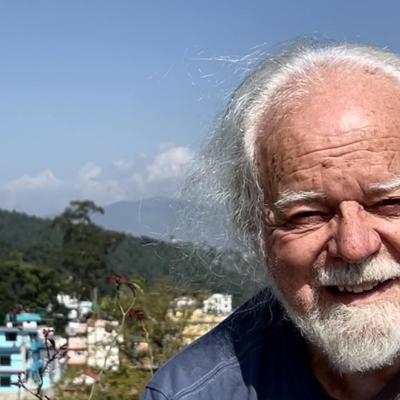

Then we took a 2.5 kilometer cable car ride up the Chandragiri Hills. Such stunning views of the mountains and the valley!
At the top of the hills, our guide, Sarita identified peaks in the Annapurna range, and parts of the Everest range, but not the peak of Mount Everest itself. From Nepal, Everest is partially hidden by a closer yet, lower mountain. And today the cloud hiding the peak just never moved.
The picture below shows what we saw compared to what was there.
But what an adventure actually seeing the highest mountain range in the world!
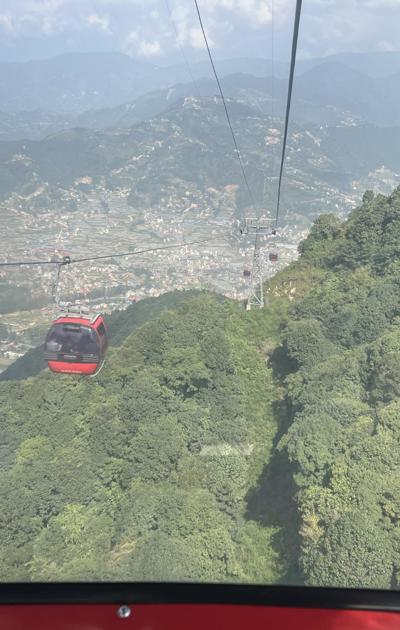

Sarita also took us to the Bhaleshwor Mahadev Temple where we received a tika from a monk and walked clockwise around the temple to honor the Hindu deities.
On the way back down from the viewing platform we saw that it was getting cloudier so we took the cable car back down to earth.
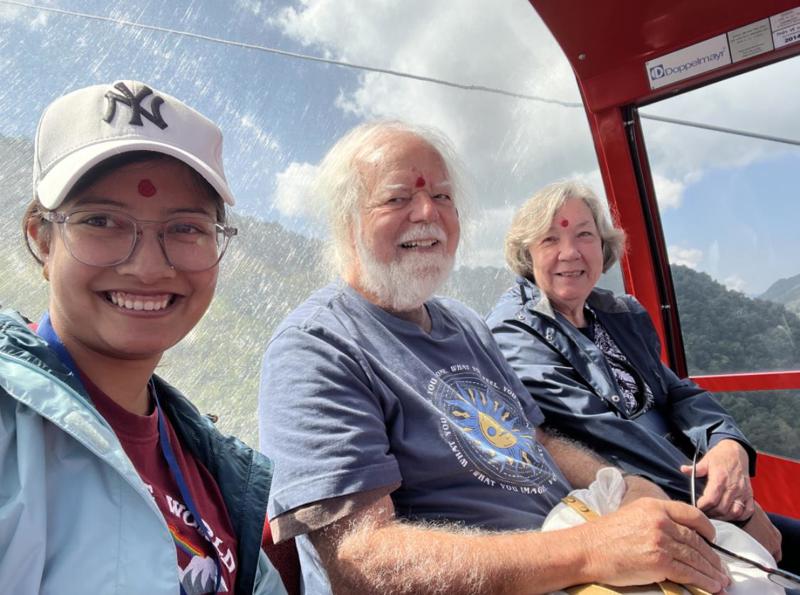
Sarita asked what else we’ve seen in Kathmandu and we told her that we visited the Monkey temple and had plans to visit the Boudhanath Stupa that afternoon. What luck! She is actually completing her thesis on the Boudhanath Stupa at university! So we extended our time with her to include a tour of the largest Buddhist Stupa in Nepal.
This was an amazing enclave in the middle of the city. Built in the 6th century, it was, over time surrounded by numerous monasteries, and eventually shops, and restaurants. We had a great lunch (momo!) at a rooftop restaurant overlooking the Stupa. Afterwards we joined other visitors walking in a clockwise direction around the stupa, spinning prayer wheels.
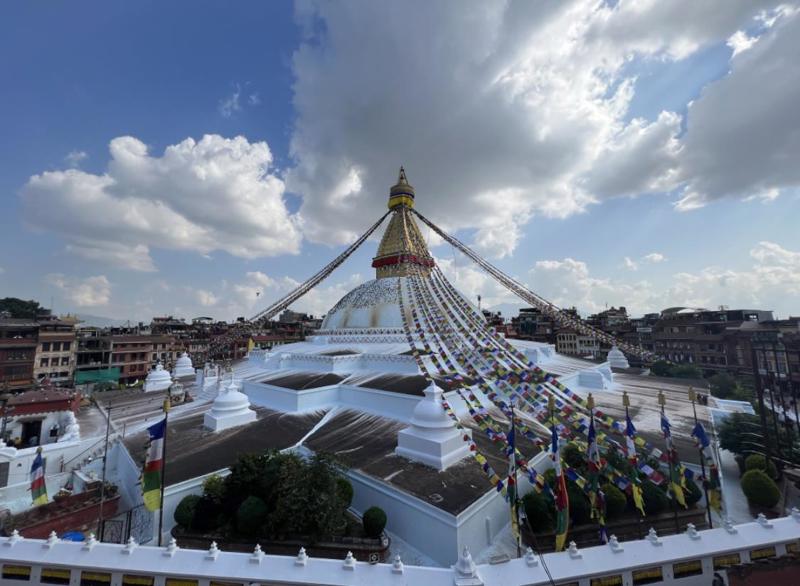
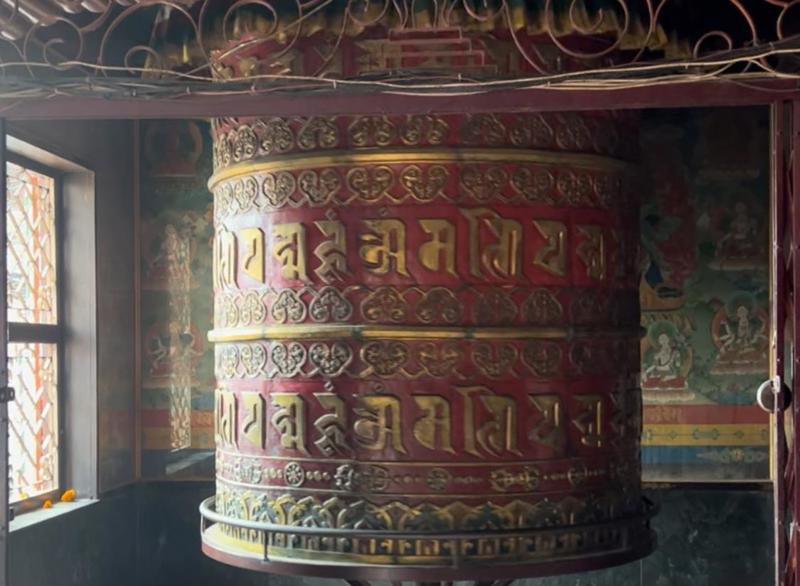
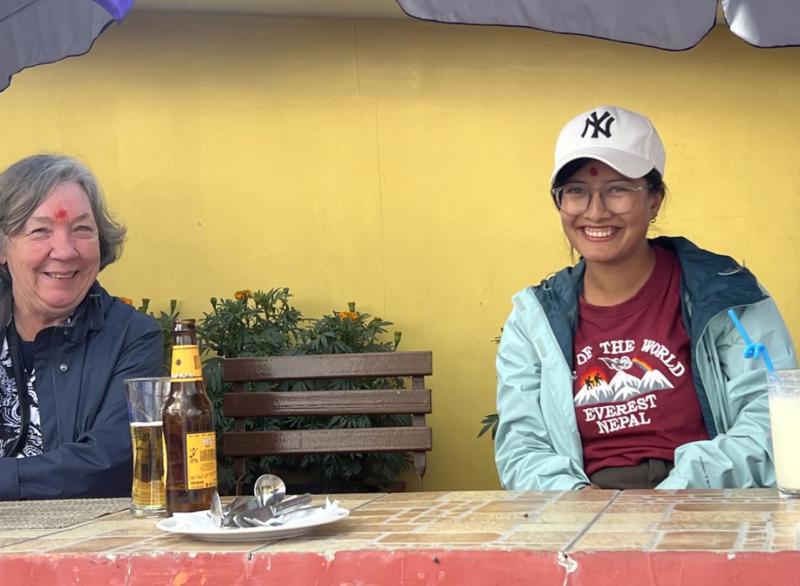

Sarita told us we didn’t have to have prayers for each prayer wheel or say/sing mantras, but joining the other walkers is an important aspect of experiencing Boudhanath.
We are sad to be leaving this wonderful city and country! The people here are the kindest and so happy to share their country’s history no matter which of the 142 ethic groups or 10 religions they belong to, or which of the 129 languages they speak. It’s such a colorful and unique mix here. Plus in the Nepalese calendar it’s 2080!
The only thing we will not miss is the traffic here. The streets are very narrow and crowded and we became very fatalistic each time we stepped into a taxi!
Goodbye Kathmandu!
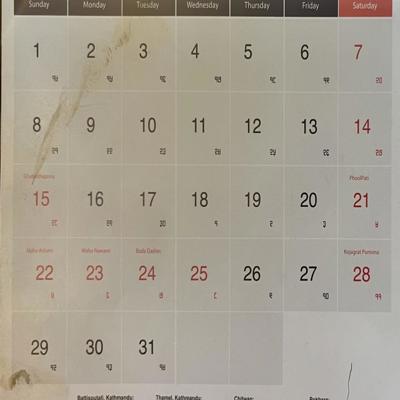

1.
Prologue
2.
Chapter 1 - London, England
3.
Chapter 2 - Dubrovnik, Croatia
4.
Chapter 3 - Athens, Greece
5.
Chapter 4 - Middle Ea —-um European Cruise: Cyprus, Greece and Turkey
6.
Chapter 5 - Surprise! We’re in Cyprus
7.
Chapter 6 - The Greek Isle of Mykonos
8.
Chapter 7 - the Greek Isle of Rhodes
9.
Chapter 8- The Greek Isle of Santorini
10.
Chapter 9 - Bodrum, Turkey
11.
Chapter 10 - Kusadasi / Ephesus, Turkey
12.
Interlude: Transiting through Qatar
13.
Chapter 11 - Kathmandu, Nepal
14.
Chapter 12 - Singapore
15.
Chapter 13 - Darwin, Australia
16.
Chapter 14 - Port Douglas
17.
Chapter 15 - Adelaide
18.
Chapter 16 - Kangaroo Island
19.
Chapter 17 - Sydney
20.
Chapter 18 - Hawai’i, United States
21.
Epilogue
Share your travel adventures like this!
Create your own travel blog in one step
Share with friends and family to follow your journey
Easy set up, no technical knowledge needed and unlimited storage!
© 2025 Travel Diaries. All rights reserved.